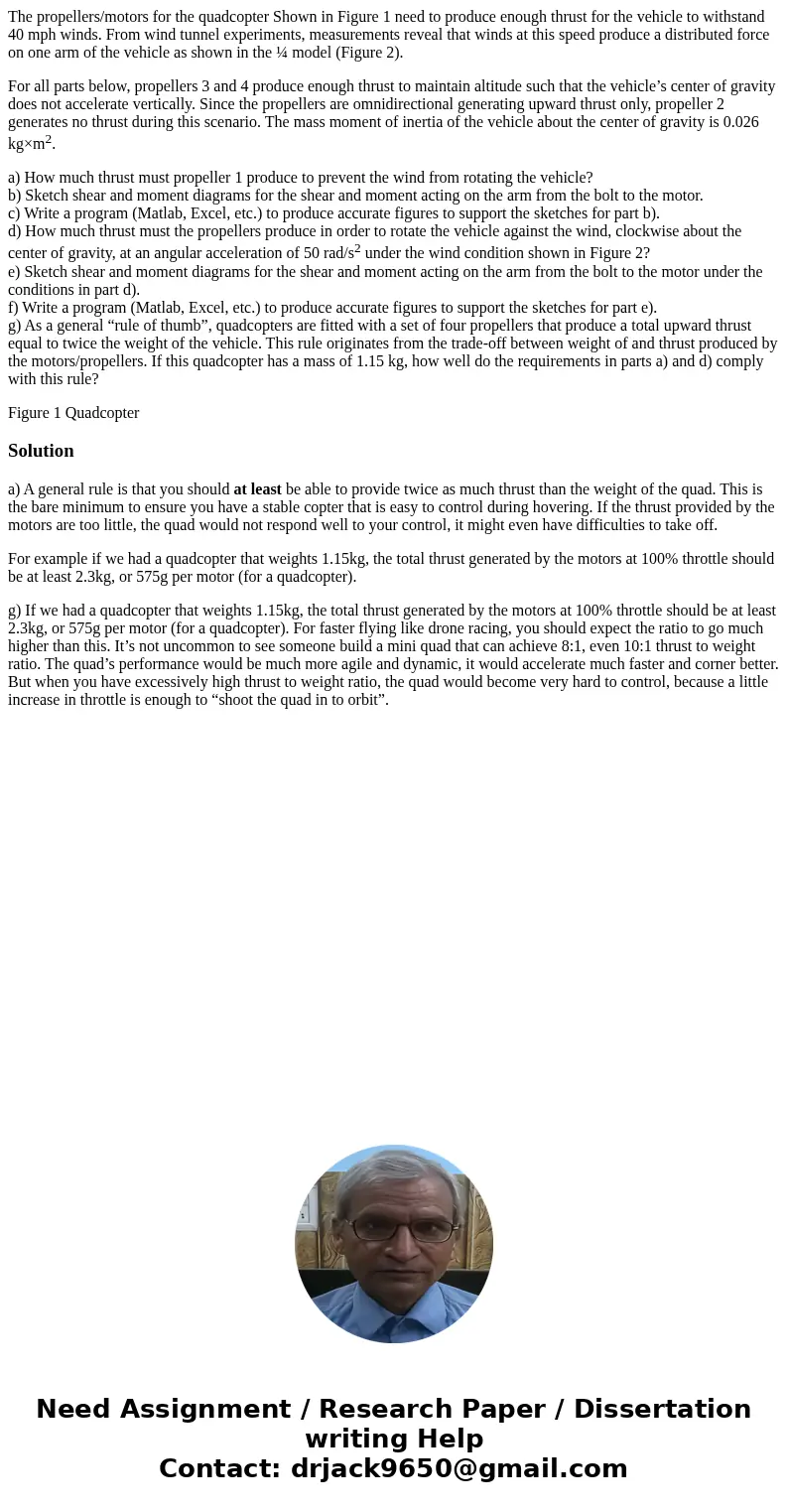The propellersmotors for the quadcopter Shown in Figure 1 ne
The propellers/motors for the quadcopter Shown in Figure 1 need to produce enough thrust for the vehicle to withstand 40 mph winds. From wind tunnel experiments, measurements reveal that winds at this speed produce a distributed force on one arm of the vehicle as shown in the ¼ model (Figure 2).
For all parts below, propellers 3 and 4 produce enough thrust to maintain altitude such that the vehicle’s center of gravity does not accelerate vertically. Since the propellers are omnidirectional generating upward thrust only, propeller 2 generates no thrust during this scenario. The mass moment of inertia of the vehicle about the center of gravity is 0.026 kg×m2.
a) How much thrust must propeller 1 produce to prevent the wind from rotating the vehicle?
b) Sketch shear and moment diagrams for the shear and moment acting on the arm from the bolt to the motor.
c) Write a program (Matlab, Excel, etc.) to produce accurate figures to support the sketches for part b).
d) How much thrust must the propellers produce in order to rotate the vehicle against the wind, clockwise about the center of gravity, at an angular acceleration of 50 rad/s2 under the wind condition shown in Figure 2?
e) Sketch shear and moment diagrams for the shear and moment acting on the arm from the bolt to the motor under the conditions in part d).
f) Write a program (Matlab, Excel, etc.) to produce accurate figures to support the sketches for part e).
g) As a general “rule of thumb”, quadcopters are fitted with a set of four propellers that produce a total upward thrust equal to twice the weight of the vehicle. This rule originates from the trade-off between weight of and thrust produced by the motors/propellers. If this quadcopter has a mass of 1.15 kg, how well do the requirements in parts a) and d) comply with this rule?
Solution
a) A general rule is that you should at least be able to provide twice as much thrust than the weight of the quad. This is the bare minimum to ensure you have a stable copter that is easy to control during hovering. If the thrust provided by the motors are too little, the quad would not respond well to your control, it might even have difficulties to take off.
For example if we had a quadcopter that weights 1.15kg, the total thrust generated by the motors at 100% throttle should be at least 2.3kg, or 575g per motor (for a quadcopter).
g) If we had a quadcopter that weights 1.15kg, the total thrust generated by the motors at 100% throttle should be at least 2.3kg, or 575g per motor (for a quadcopter). For faster flying like drone racing, you should expect the ratio to go much higher than this. It’s not uncommon to see someone build a mini quad that can achieve 8:1, even 10:1 thrust to weight ratio. The quad’s performance would be much more agile and dynamic, it would accelerate much faster and corner better. But when you have excessively high thrust to weight ratio, the quad would become very hard to control, because a little increase in throttle is enough to “shoot the quad in to orbit”.

 Homework Sourse
Homework Sourse